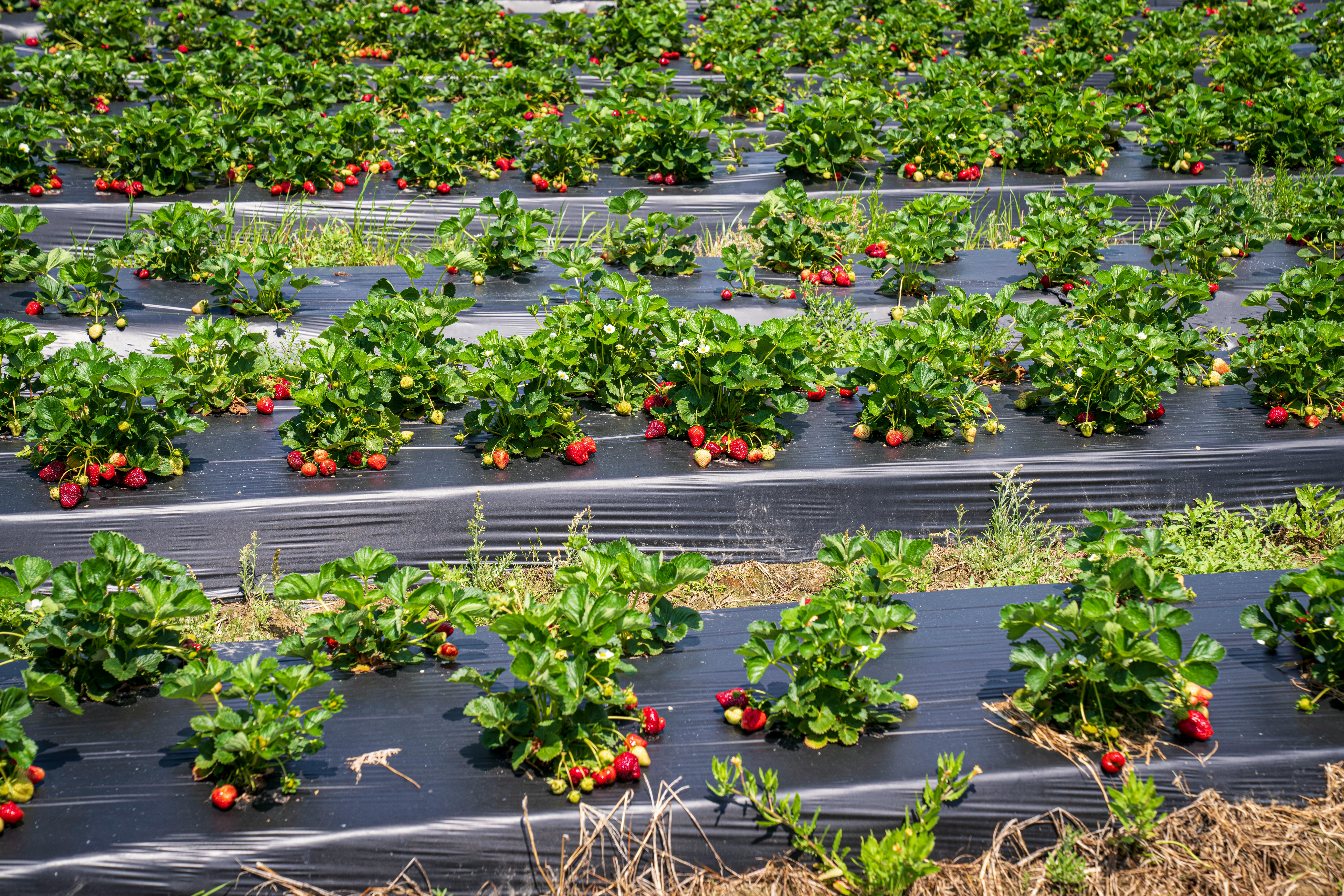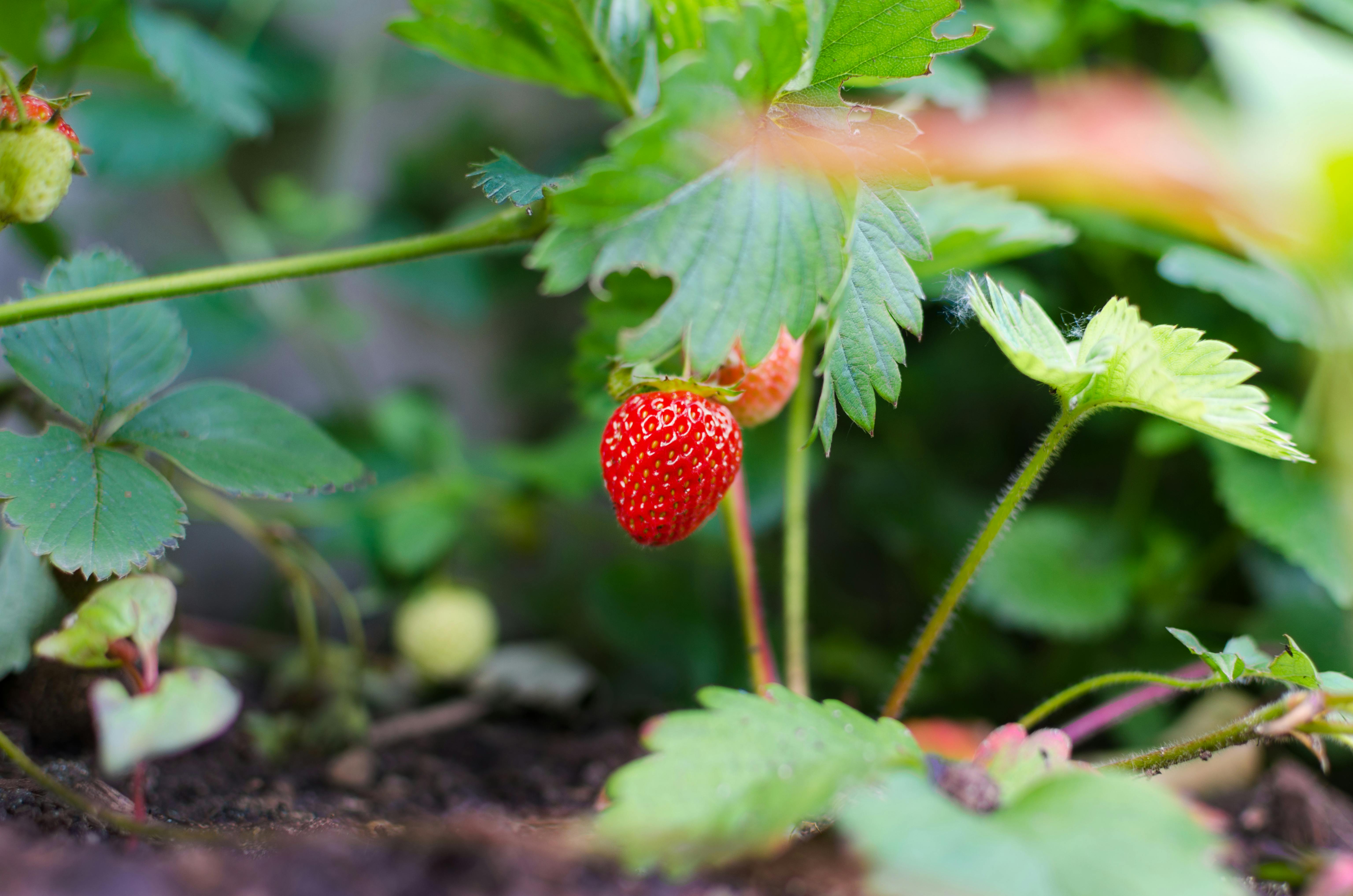Organic strawberries are a delicious and nutritious fruit, with sweet and juicy flavor. Growing organic strawberries can be a rewarding experience, as they are easy to grow and can be harvested year-round in most climates. It is important to use organic growing methods so that you can enjoy the full flavor of the berries without the added chemicals found in conventional farming methods. In this guide, we will provide an overview of how to grow organic strawberries from planting to harvest.Choosing a location for growing organic strawberries is an important decision. To start, consider the climate in your region and the amount of sunlight it receives. Strawberries prefer sunny, warm climates and need at least 6-8 hours of direct sunlight each day to thrive. Additionally, be sure to choose a location with well-drained soil that is free from weeds or other pests. You will also want to ensure that there are no nearby sources of chemical or artificial fertilizers that could contaminate your crop. Finally, be sure to select a spot that is large enough to accommodate the size of your crop and provides enough space for easy access when tending to it.
Preparing the Soil for Growing Organic Strawberries
Organic strawberry production requires good soil preparation. The soil should be well-drained and have a pH of 6.0 to 6.5. The best way to prepare the soil is to mix organic compost, manure, and other organic materials into the existing soil. This will add nutrients and improve the texture of the soil, making it easier for the strawberries to take root. It is also important to remove any weeds or grass that may be present in the area as they can compete with the strawberry plants for nutrients and water. Once the soil is prepared, it is important to add fertilizer before planting the strawberries.
It is also important to create raised beds or mounds for your strawberry plants if you are growing them in a container garden. Raised beds provide better drainage and make it easier for plants to access more nutrients in their root zone. The mounds should be 6-8 inches high and about 12 inches wide with a V-shape at the bottom for proper drainage. When growing in containers, make sure they are large enough for each plant so that their roots do not become overcrowded.
Finally, make sure you water your strawberry plants regularly throughout the growing season and apply mulch around them so that moisture is retained in the soil. Mulching also helps keep weeds from competing with your plants and keeps them from getting too much sun or drying out quickly during hot days. With proper preparation of your soil and regular care, you can enjoy a delicious harvest of organic strawberries!
Planting Organic Strawberry Plants
Organic strawberry plants can be a great addition to any garden. They are easy to grow and can provide a delicious fruit for many years. Growing organic strawberries requires some effort, but with the right preparation and care, you can be harvesting your own organic strawberries in no time.
The first step is to prepare the planting site. Make sure that the area you choose is well drained and receives at least 8 hours of direct sunlight each day. The soil should be amended with organic matter such as compost or manure, to help it retain moisture and provide nutrients for the plants. Once the soil is ready, you can begin planting your strawberry plants.
When planting your organic strawberry plants, space them about 18 inches apart in rows that are 3-4 feet apart. Dig a hole that is slightly larger than the root ball of the plant and place it in the hole so that the crown (where the roots meet the stem) is at ground level. Gently fill in around the roots with soil and press down firmly. Water thoroughly after planting to help settle the soil around the roots.
Organic strawberry plants need regular watering during their growing season to ensure good fruit production. Be sure to water deeply once a week during dry periods, or more often if necessary. Mulching around your plants will also help retain moisture and keep weeds from competing for nutrients.
Fertilizing your strawberry plants is important for optimal growth. Use a balanced organic fertilizer such as fish emulsion or compost tea every few weeks during their growing season (late spring through early fall). After harvest, apply an additional layer of mulch around each plant to protect it from winter cold and frost.
Organic strawberry plants are relatively pest-free, but they can still suffer from disease or other issues if not cared for properly. Inspect your plants regularly for signs of pests or disease such as discoloration or wilting leaves. If you find any problems, take action quickly by removing affected leaves or using an approved organic pesticide if necessary.
With a little bit of effort, you can have delicious organic strawberries for many years to come! Planting organic strawberry plants takes some preparation and care, but with patience you’ll soon be enjoying sweet rewards!
Fertilizing Organic Strawberry Plants
Organic strawberry plants need to be fertilized in order to produce healthy, juicy fruit. While there are many commercial fertilizers available for purchase, there are also many organic options that can be used with great success. Here are some tips for fertilizing your organic strawberry plants.
Start with a light application of compost or manure in the spring to give your plants a nutrient boost. This will help the plants get off to a strong start and will encourage healthy growth throughout the season. You can also use an organic fertilizer formulated specifically for strawberries, as this will provide the exact nutrients that they need.
Continue to apply additional fertilizer throughout the growing season as needed. A balanced fertilizer is recommended as it will provide all of the essential nutrients that strawberries need for optimal growth and fruit production. Be sure not to over-fertilize as this can burn your plants or cause other problems.
At the end of the season, remove any remaining plant material and spread a layer of compost or manure around your strawberry beds. This will help replenish any lost nutrients and will help keep your soil in good condition for next year’s crop.
Watering Organic Strawberry Plants
Organic strawberry plants need to be watered regularly to ensure healthy growth and production of fruit. The best way to water organic strawberries is to use a drip irrigation system, as it delivers water directly to the roots of the plant, where it is most needed. If this is not available, then hand-watering with a watering can or hose is also an option. When watering, make sure the soil gets thoroughly wet and that all parts of the plant are reached. Water early in the morning so that any excess moisture will evaporate quickly during the day. Aim for about 1-2 inches of water per week, depending on the weather and soil conditions. Avoid over-watering, as this can lead to root rot and other problems. Additionally, mulching around the base of the plants can help conserve moisture in the soil and reduce evaporation.

Mulching Organic Strawberry Plants
Mulching is an important part of growing organic strawberries. Mulch helps to keep the soil moist and helps to keep weeds from invading the strawberry beds. It also helps to maintain a more even temperature in the soil, which is beneficial for both growth and development of the strawberry plants.
When mulching organic strawberry plants, it is important to choose a material that will not harm the plants or introduce any harmful chemicals into the soil. Organic materials such as straw, grass clippings, leaves, and wood chips are all good choices for mulching around strawberry plants. It is also important to make sure that the mulch is applied at least two inches deep around each plant. This will help keep moisture in the soil and prevent weeds from growing.
It is also important to make sure that you are regularly checking the organic mulch around your strawberry plants for any signs of deterioration or damage. If there are any signs of deterioration, you should replace it with fresh mulch to ensure that your strawberry plants continue to get the benefits of a healthy environment.
Finally, it is important to remember that too much organic mulch can cause waterlogging in your strawberry beds which can lead to root rot and other issues with your plants. Therefore, it is best to apply just enough organic mulch so that your strawberries can benefit from its presence without causing any harm or damage.
Controlling Weeds and Insects on Organic Strawberries
Organic strawberry production requires careful control of weeds and insects. Weeds can compete with the strawberries for nutrients and water, while insects can feed on the fruit or cause damage to the plants. In order to maintain a successful organic strawberry crop, it is important to identify the weeds and insects that are present in the field and take steps to control them.
Weed control in organic strawberry production can be achieved through a combination of cultural, mechanical, and biological methods. Cultural methods include crop rotation, cover crops, mowing, mulching, irrigation management, and tillage practices. Mechanical methods include hand weeding or hoeing to remove existing weeds and prevent new ones from germinating. Biological controls involve using beneficial organisms such as predators or parasites to feed on weed seeds or larvae.
Insect management in organic strawberry production is also accomplished through a variety of cultural, mechanical, and biological methods. Cultural methods include crop rotation to break up pest life cycles; using resistant varieties; proper irrigation practices; maintaining healthy soil; planting trap crops; and removing plants that have been infested by pests. Mechanical methods include hand-picking or vacuuming pests from plants; using row covers or screens; using sticky traps; and physical barriers such as row covers or screens. Biological controls involve using beneficial organisms such as predators or parasites to feed on insect pests, as well as introducing natural enemies of pests into the field.
Organic production of strawberries requires vigilance in monitoring for weeds and insects in order to ensure successful yields of high-quality fruit. Utilizing a combination of cultural, mechanical, and biological controls is essential for controlling weeds and insects on organic strawberries without resorting to chemicals that are prohibited under organic standards.
Harvesting Organic Strawberries
Organic strawberries are a delicious and nutritious addition to any garden. Harvesting organic strawberries can be a bit tricky, but with the right techniques, you can enjoy a bountiful harvest of sweet and juicy fruits. The best time to harvest organic strawberries is early in the morning when they are still cool from the night air and have not been exposed to the heat of the day. Make sure you use clean, sharp scissors or pruners to cut off each strawberry at the stem. It’s important to never tug or pull on the fruit as it could damage the plant. Be sure to only pick ripe berries as under-ripe strawberries will not ripen after being harvested.
Storing Organic Strawberries
Organic strawberries need to be stored correctly in order to retain their freshness and flavor. The best way to store them is in an airtight container in the refrigerator. Make sure that any excess moisture is removed from the container before putting them away. When storing organic strawberries, it’s important to keep them away from fruits that produce ethylene gas like apples and bananas as this can cause them to spoil quickly. To extend their shelf life, try freezing your organic strawberries in a single layer on a baking sheet before transferring them into an airtight container or freezer bag. This will help preserve their flavor and texture for up to 12 months.

Conclusion
Organic strawberry growing is a rewarding experience that can provide delicious, nutritious fruits. It requires dedication and commitment, but the results are worth it. If you follow these steps for how to grow organic strawberries, you should be able to enjoy fresh strawberries from your garden in no time.
Organic strawberry cultivation is both eco-friendly and economically beneficial, as it reduces pollution and eliminates the need for expensive pesticides or fertilizers. Furthermore, organic strawberries are healthier than their non-organic counterparts as they contain fewer chemicals and are pesticide-free. Finally, organic strawberry growing provides an opportunity to connect with nature and foster a greater appreciation for the environment.
In conclusion, growing organic strawberries is a great way to enjoy delicious fruits while contributing to the health of your local ecosystem. With some patience, dedication, and knowledge of the basics of organic strawberry cultivation, you can start growing juicy strawberries in no time!



